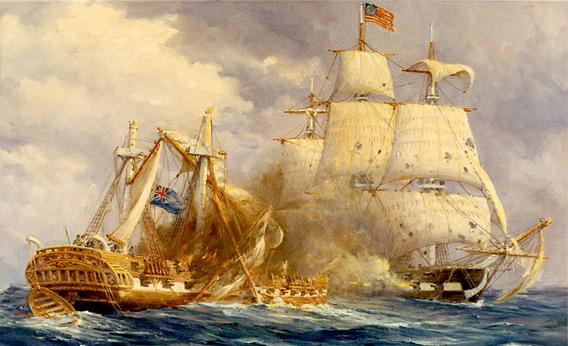The War of 1812 began in June 1812, when the United States of America declared war on the United Kingdom of Great Britain and Ireland — only three decades after the rebellious Thirteen Colonies had achieved their independence from Great Britain in the War of the American Revolution.
The declaration of war in 1812 meant that regardless of their proximity to or relationships with their neighbour to the south, all the remaining British North American colonies — Nova Scotia, Cape Breton Island (then separate from Nova Scotia), New Brunswick, Newfoundland, Lower Canada (Quebec) and Upper Canada (Ontario) were automatically at war with the United States.
The impact of the war in British North America was experienced mostly in Upper Canada and on the Great Lakes but the other colonies, including Nova Scotia, also had a role to play, primarily at sea. This activity was led by the Royal Navy from its North Atlantic Squadron base at Halifax, joined by privateer vessels from home ports along the Atlantic coast and Bay of Fundy.
The War of 1812 was part of a much larger European struggle which ended with the Treaty of Ghent, signed on 24 December 1814 and ratified by the United Kingdom six days later. News travelled slowly in those days, however, and it took a long time for sailing vessels carrying mail and newspapers to cross the North Atlantic in winter. As a result, the United States did not sign the treaty until February 1815 — and in the meantime unknowingly continued the hostilities, with a significant victory at the Battle of New Orleans in January.
Explore these resources on their website to learn more about Nova Scotia’s involvement in the War of 1812:

No comments:
Post a Comment